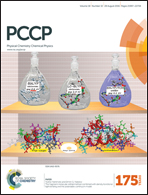Electrochemical construction of three-dimensional porous Mn3O4 nanosheet arrays as an anode for the lithium ion battery†
Abstract
Three-dimensional (3D) porous Mn3O4 nanosheet arrays were constructed via an electrodeposition followed by high temperature annealing using 3D porous Cu, prepared by a facile electroless plating method, as the substrate. The 3D pores and voids between the nanosheet arrays were able to provide rapid ion transfer channels, as well as accommodating the volumetric changes of Mn3O4 during the electrochemical cycling. Electrons can directly exchange between the substrate and the nanosheet units, avoiding curving and the long transfer distance in conventional electrodes constructed using casting technology. Furthermore, the nanosheets were transformed into the architecture with smaller sub-nanosheets on the pristine nanosheets after 1 cycle, facilitating ion transferring, and were thoroughly transformed into smaller sub-nanosheets after 1000 cycles but without obvious exfoliation, assuring good electrical contact between the active particles and substrate. Based on the above unique characteristics, the 3D porous Mn3O4 nanosheet arrays could be directly used as a binder-free and conductive-agent-free electrode to deliver ultrahigh electrochemical performance that is much better than achieved in previous reports. The first reversible capacity was 1166.3 mA h g−1 and remained 667.9 mA h g−1 after 1000 cycles at 1.0 A g−1. Also, the reversible capacities at high current densities of 10.0 A g−1 and 20.0 A g−1 remained high at 416.1 and 216.7 mA h g−1, respectively.


 Please wait while we load your content...
Please wait while we load your content...